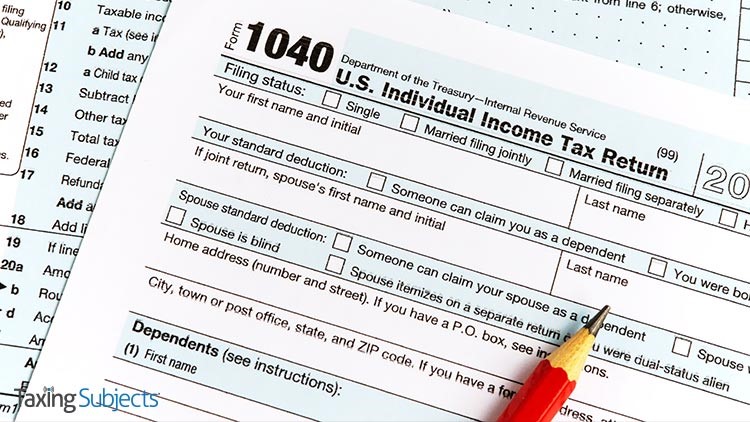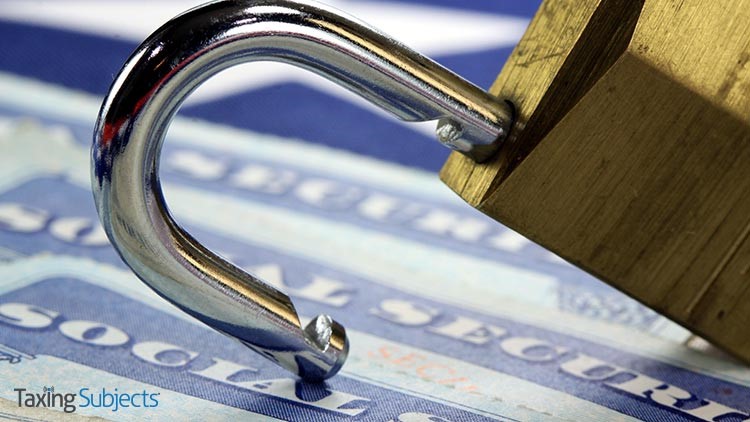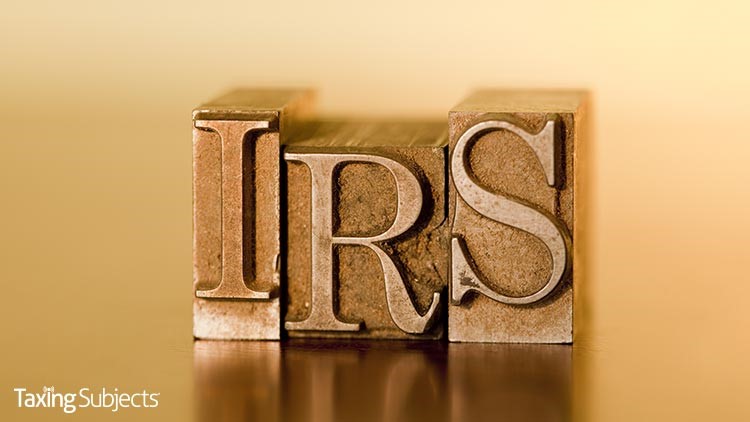by | Nov 27, 2020 | Tax Tips and News
With 2020’s extended tax deadlines due to the coronavirus pandemic, it seems like we just wrapped up the previous tax season. But believe it or not, the next filing season kicks off Jan. 1, 2021.
The Internal Revenue Service is encouraging taxpayers to begin organizing their tax-related documents now, to avoid confusion later on. The IRS has even put together a special web page that outlines the steps that taxpayers can take now to prepare for the 2021 filing season.
Make filing easier in ‘21.
The first step toward filing, of course is to gather the necessary paperwork or electronic files that every taxpayer needs to file. Forms W-2, Wage and Tax Statement; Forms 1099-MISC, Miscellaneous Income; and other income documents help determine if the taxpayer is eligible for deductions or credits.
They’ll also need their Notice 1444, Economic Impact Payment, to calculate any Recovery Rebate Credit they may be eligible for on their 2020 federal income tax return.
The best rule of thumb is that most income is taxable, including unemployment compensation, refund interest and income from the gig economy and virtual currencies.
Taxpayers with an Individual Taxpayer Identification Number (ITIN) should ensure it hasn’t expired before they file their 2020 tax return. If it has expired, the IRS recommends they submit a Form W-7, Application for IRS Individual Identification Number, now to renew their ITIN.
Taxpayers who fail to renew an ITIN before filing a tax return next year could face a delayed refund and could even be ineligible for certain tax credits.
Also on the income side, taxpayers can use the Tax Withholding Estimator on IRS.gov to help calculate the right amount of tax to have withheld from their paychecks. If they need to adjust withholding for the remainder of the year, time is running out. It’s best to submit a new Form W-4, Employee’s Withholding Certificate, to their employer as soon as possible.
Those who received non-wage income like self-employment income, investment income, taxable Social Security benefits, and in some instances, pension and annuity income, may have to make estimated tax payments.
Payment options can be found at IRS.gov/payments.
No EIP? Check into the Recovery Rebate Credit!
Taxpayers may be able to claim the Recovery Rebate Credit if they met the eligibility criteria in 2020 and:
- They didn’t receive an Economic Impact Payment this year, or
- Their Economic Impact Payment was less than $1,200 ($2,400 if married filing jointly for 2019 or 2018) plus $500 for each qualifying child.
- For additional information about the Economic Impact Payment, taxpayers can visit the Economic Impact Payment Information Center.
Interest on a refund is taxable.
Taxpayers who got a federal tax refund in 2020 may have been paid interest. The IRS sent interest payments to individual taxpayers who timely filed their 2019 federal income tax returns and received refunds. Most interest payments were received separately from tax refunds.
Interest payments are taxable and must be reported on 2020 federal income tax returns. In January 2021, the IRS will send a Form 1099-INT, Interest Income, to anyone who received interest totaling at least $10.
Although the IRS issues most refunds in less than 21 days, the IRS cautions taxpayers not to rely on receiving a 2020 federal tax refund by a certain date, especially when making major purchases or paying bills. Some returns may require additional review and may take longer.
Some Refunds Not Available Until March
By law, the IRS can’t issue refunds for people claiming the Earned Income Tax Credit (EITC) or Additional Child Tax Credit (ACTC) before the middle of February. The law requires the IRS to hold the entire refund – even the portion not associated with either the EITC or ACTC.
The IRS expects most refunds related to these two credits to be available in taxpayer bank accounts or on debit cards by the first week of March if they chose direct deposit and there aren’t any other issues with their tax return.
Taxpayers should use the Where’s My Refund? online tool to track their refund payment.
Stay home and stay safe with IRS online tools.
Taxpayers can find online tools and resources to help get the information they need. These IRS.gov tools are easy-to-use and available 24 hours a day. Millions of people use them to find information about their accounts, get answers to tax questions or file and pay their taxes.
Taxpayers also have several options to find a tax preparer. One resource is Choosing a Tax Professional, which offers a wealth of information for selecting a tax professional.
The Directory of Federal Tax Return Preparers with Credentials and Select Qualifications can help taxpayers find preparers in their area who currently hold professional credentials recognized by the IRS, or who hold an Annual Filing Season Program Record of Completion.
Source: IR-2020-256
– Story provided by TaxingSubjects.com
by | Nov 27, 2020 | Tax Tips and News
Edited November 23, 2020: Added the list of National Tax Security Awareness Week webinars.
IRS says National Tax Security Awareness Week tips can help you avoid identity theft.
Tax professionals across the country are preparing for next filing season by training seasonal staff, reviewing software updates, and earning CPE. While those annual rituals are required for success in January, the Internal Revenue Service and its Security Summit partners use their annual National Tax Security Awareness Week event to stress that data security is an equally important part of pre-season planning.
Since 2016, National Tax Security Awareness Week has been used to highlight data security best practices. This year, the IRS says the event will be held from November 30 to December 4, and it will include tips for avoiding identity theft tax refund fraud. IRS Commissioner Chuck Rettig provided two reasons for the slight shift in focus:
- More Americans are using telework to avoid exposure to COVID-19.
- The agency anticipates a holiday spike in COVID-related phishing scams.
Traditionally focusing on a different security topic on each day of the event, the IRS press release included the following preview for this year’s National Tax Security Awareness Week:
- Day 1: Cyber Monday: Protect personal and financial information online
- Day 2: Use multi-factor authentication
- Day 3: Get an Identity Protection PIN
- Day 4: Businesses at risk for identity theft
- Day 5: Tax professionals should review their safeguards
While the first three days will focus on specific actions that individuals can take to protect their data, the end of the week covers business- and tax professional-specific recommendations.
In addition to press releases, the IRS says National Tax Security Awareness Week educational materials will also be published on social media: “The effort will include special informational graphics and a social media effort on Twitter and Instagram with @IRSnews and #TaxSecurity.” Those who prefer YouTube can check out “Easy Steps to Protect Your Computer and Phone” and “Avoid Phishing Emails” on the IRSvideos channel.
Sign up for a webinar!
The IRS will be hosting a webinar on each day’s topic during National Tax Security Awareness Week. The following list comes directly from the agency, and it contains links to register:
|
November 30
Click Here to Register
|
Cyber Monday: Security Types from the IRS
This webinar will cover the following:
- Shopping Securely Online
- Security Software Tips for Computers and Mobile Devices
- Identifying Phishing Scams
- Cybersecurity when working from home
|
|
December 1
Click Here to Register
|
How to Protect Your Accounts Using Multi-Factor Authentication
This webinar will cover the following:
- National Institute of Standards and Technology Tips for Strong Passwords
- Password Managers to Secure Unique Passwords
- Options for Multi-Factor Authentication
|
|
December 2
Click Here to Register
|
Get an Identity Protection Pin
This webinar will cover the following:
- What is an Identity Protection PIN?
- January expansion of IRS IP PIN Program
- Steps to Obtain an IP PIN
|
|
December 3
Click Here to Register
|
Small Businesses Must Guard Against Identity Theft
This webinar will cover the following:
- Federal Trade Commission Security Tips for Small Business
- Protecting Wireless Networks
- IRS Assistance for Businesses Experiencing Tax-Related Identity Theft
|
|
December 4
Click Here to Register
|
Beware of Phishing Scams Targeting All Taxpayers
This webinar will cover the following:
- Impact of COVID-19 on Cybercriminal Phishing Scams
- Visual Examples of Recent COVID-19 Related Phishing Scams
- Common Characteristics of Phishing Messages
|
Don’t forget to check Taxing Subjects on each day of the event, starting Monday, November 30.
Source: IR-2020-259
– Story provided by TaxingSubjects.com
by | Nov 27, 2020 | Tax Tips and News
The Internal Revenue Service Advisory Council, also known as IRSAC, has come out with its annual report for 2020. The 195-page report includes recommendations to the IRS on new and continuing issues in tax administration.
The 34-member panel is a federal advisory committee that provides an organized public forum for discussion of relevant tax administration issues between IRS officials and representatives of the public.
IRSAC members offer constructive observations on current or proposed IRS policies, procedures, and programs.
The IRS has a lot on their plate.
The Public Report for 2020 has recommendations on some 26 issues, covering a broad range of topics, including:
- Funding of the IRS
- The Taxpayer First Act
- Expansion of e-File
- Proposal for an early exam program for Large Business
- Telephone response times for the Practitioner Priority Service
- Resources for Native American taxpayers and federally recognized tribes
- Taxpayer Digital Communications
The first item on the list isn’t new: Adequate and sustained funding for the operations of the IRS has been the most important issue on the last four annual reports from the committee. This year’s report credits the Taxpayer First Act (TFA) of 2019 with addressing this need, although more reliable means of guaranteeing adequate funding is needed.
The IRSAC report says there is a consensus that return on investment in the IRS would yield much more in dollars than what is invested in operational improvements. Despite this, however, the IRS annual budget continues to shrink.
“Overall funding for the IRS has decreased roughly 20 percent on an inflation-adjusted basis since FY 2010 including the effects of across-the-board rescissions and reductions required by sequestration and other adjustments,” the report states. “Adjusting for inflation, the IRS’s $12.1 billion budget in FY 2010 would equal $14.3 billion in 2020, nearly $3 billion higher than the enacted budget of $11.5 billion for FY 2020. With the exception of FY 2016 and FY 2020, appropriations to the IRS have consistently been less than the previous year over the past decade.”
The committee also found that, on top of inadequate funding, inconsistent timing and uncertainty generated by Congress have only degraded the IRS’ operational capabilities.
The agency generates more than $3 trillion in tax revenue and funds some 80% of federal government; the committee found these problems need to be remedied before the IRS can expect to fulfill its mission completely.
The IRSAC is administered under the Federal Advisory Committee Act by the Office of National Public Liaison, part of IRS Communications and Liaison. The panel draws its members from the taxpaying public, the tax professional community, representatives of the low-income community, small and large businesses, tax-exempt and government entities, the payroll industry, and academia.
IRSAC is comprised of four subgroups aligned to the IRS operating divisions: Large Business & International, Small Business/Self-Employed, Tax Exempt/Government Entities and Wage & Investment.
Source: IR-2020-258
– Story provided by TaxingSubjects.com
by | Nov 27, 2020 | Tax Tips and News
The Internal Revenue Service is pairing up with a Virginia research firm in an effort to improve the agency’s procurement operations.
Data and Analytic Solutions of Fairfax, Va., will team up with the IRS and a group of academic researchers with a shared goal of using data science to better understand and streamline the procurement process—the process the government uses to purchase goods and services from outside vendors.
Time for a team approach?
The effort will bring together a multi-disciplinary team made up of procurement practitioners, university professors and students with procurement and machine learning experience. Machine learning is a form of artificial intelligence that makes computers more accurate at predicting outcomes without being specifically programmed.
“As with many agencies, we have a wealth of data available to us to understand where time is being spent in our contracting process,” said Shanna Webbers, IRS Chief Procurement Officer. “The intent of this research project is to enable us to hone in on key factors impacting our time to award and identify tools that can be utilized to make process improvements to shorten our lead time, more effectively allocate our human resources, and better serve our customers.”
Time is money!
One topic on the top of the researchers’ list is the length of time it takes to award a government contract.
New regulations have standardized the lead time needed to finalize a new contract procurement, resulting in the largest-ever set of data on timeframes for federal contract awards. Researchers plan to use this information to examine nearly a half-million contracts as they look for ways to improve the overall process.
The overall goal is to find the right process so that federal agencies can buy the mission-critical goods and services it needs at roughly the same speed as private industry.
The main intent of the research is to better understand key factors that impact the time it takes to award contracts and how to execute contracts more efficiently.
In addition, the team will also try to improve the accuracy of an algorithm that predicts when individual procurement requests will become signed contracts.
The partnership also plans to train the officials tasked with processing and executing contracts on the best practices of the process. Also in the works: a talent-hiring “pipeline” that can provide a steady stream of contact and resume information on acquisition professionals with data expertise.
Source: IR-2020-261
– Story provided by TaxingSubjects.com
by | Nov 27, 2020 | Tax Tips and News
The Internal Revenue Service and the Treasury Department have issued their final regulations on section 1031 like-kind exchanges. The regulations clarify the definition of real property under section 1031, while providing a rule governing the receipt of personal property incidental to real property in a like-kind exchange.
TCJA Limits Focus of Like-Kind Exchange
Legislation passed into law in 2017 as part of the Tax Cuts and Jobs Act (TCJA) limited like-kind exchange treatment to exchanges of real property.
As of Jan. 1, 2018, exchanges of personal or intangible property — such as vehicles, artwork, collectibles, patents, and other intellectual property — generally do not qualify for the same treatment of gain as do like-kind exchanges.
In addition, like-kind exchange treatment applies only to exchanges of real property held for use in a trade or business or for investment. An exchange of real property held primarily for sale doesn’t qualify as a like-kind exchange.
Under the final regulations, “real property” includes land and generally anything built on or attached to the land. As a rule, real property also includes property considered real property under state or local law.
Certain intangible property, such as leaseholds or easements, also qualifies as real property under section 1031.
It should be noted that property that wasn’t eligible for like-kind exchange treatment before the TCJA was passed remains ineligible. Neither the TCJA nor the final regulations change whether those properties are of like kind.
Reporting an Exchange
To report a like-kind exchange, taxpayers file a Form 8824, Like-Kind Exchange. The form should accompany the filer’s tax return for the year property was transferred as part of a like-kind exchange.
The Form 8824 helps taxpayers figure the amount of gain deferred as a result of the like-kind exchange, as well as the basis of the like-kind property received.
The form also helps taxpayers calculate the amount of gain they must report if cash or property that is not of a like-kind is involved in the exchange.
For more information about like-kind exchanges and other tax reform changes, visit IRS.gov/TaxReform.
Source: IR-2020-262
– Story provided by TaxingSubjects.com





